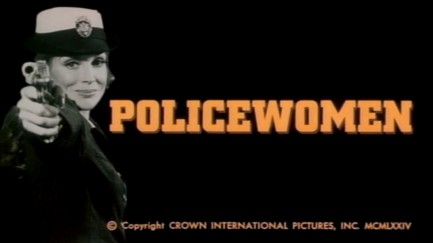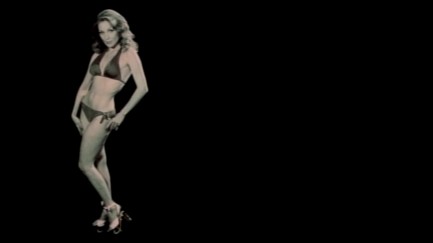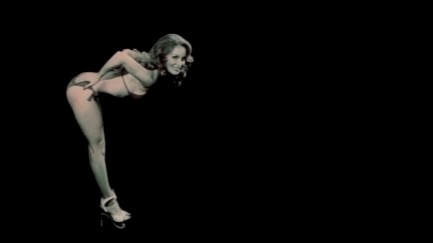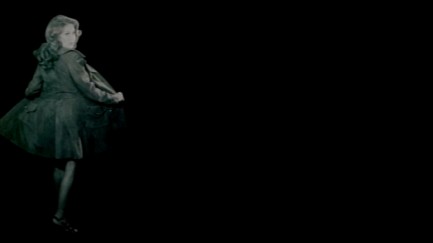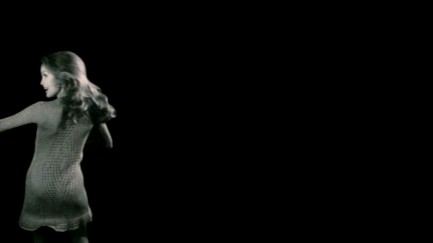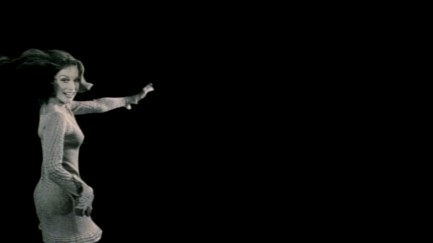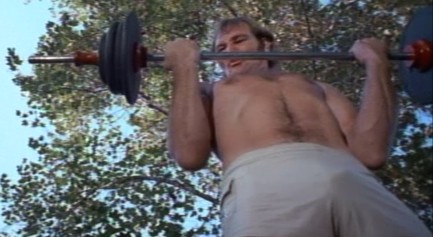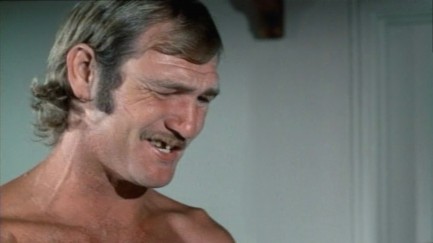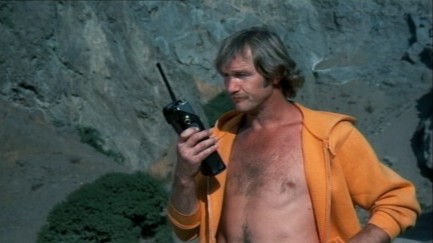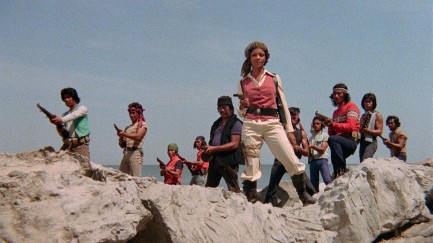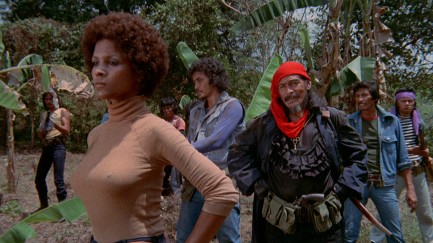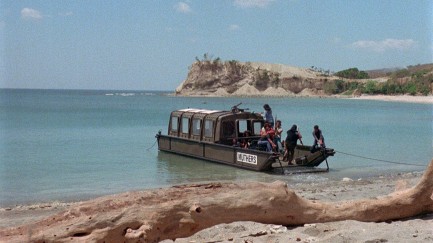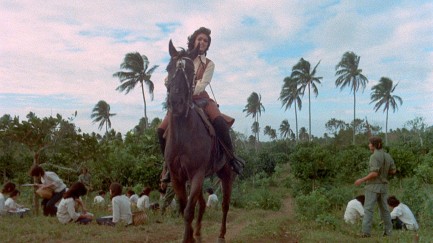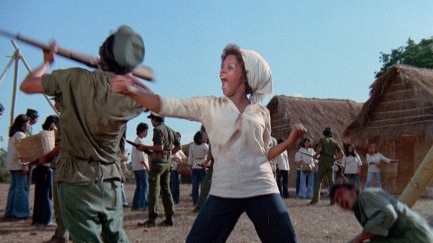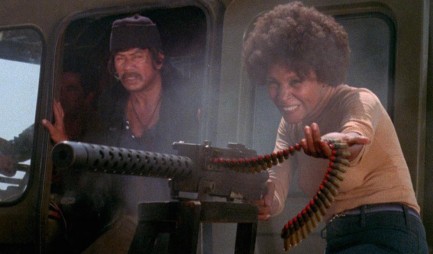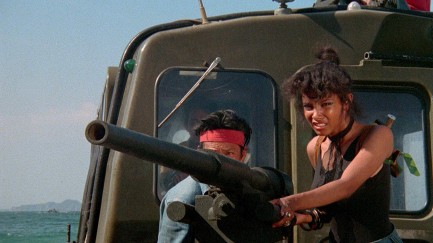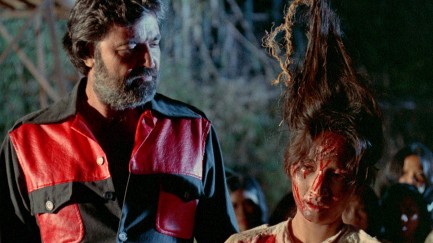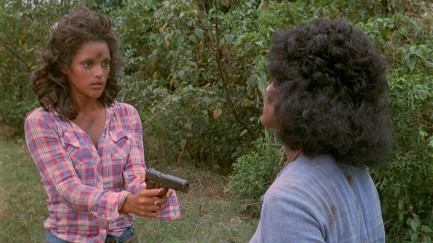 You probably can't pull this look off but there's no harm in dreaming. 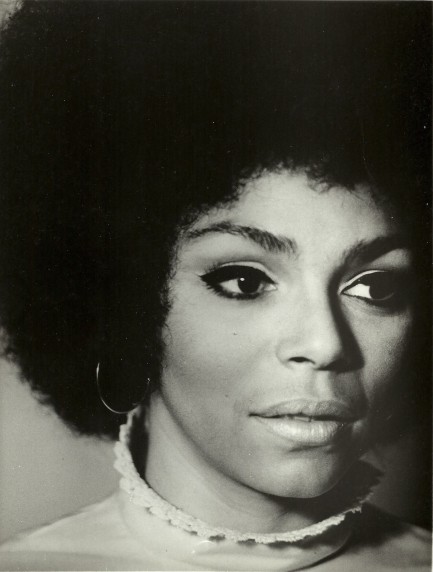
Above you see a photo of U.S. actress Rosalind Cash modeling what we like to think of as the classic afro, an image we've posted today because recently we ran across a story on Simone Williams, official Guinness World Record holder for largest afro in existence. We don't know if hers is actually the largest, regardless of what Guinness says, but it's a majestic 'do, beyond doubt. It got us thinking about the hairstyle, which in our book is the coolest of all time. There are different types of afros beside just the classic. We wanted to feature all styles, and we also bent the definition a little to include what might be categorized more accurately as large perms. We've labeled all the variations below, which will help when you start on the long, winding, and ultimately fruitless road toward your own blowout. We're aware, of course, that there were many male celebs who had afros, but we're sticking with women today. Your journey begins below. 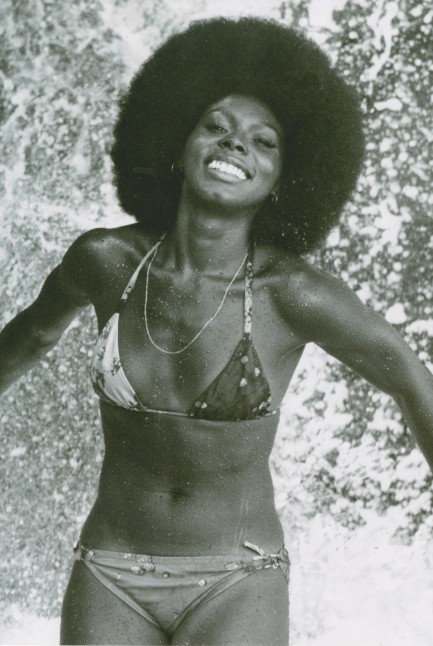 The pure joy afro, as modeled by Gloria Hendry, who appeared in such films as Live and Let Die and Savage Sisters. The pure joy afro, as modeled by Gloria Hendry, who appeared in such films as Live and Let Die and Savage Sisters.
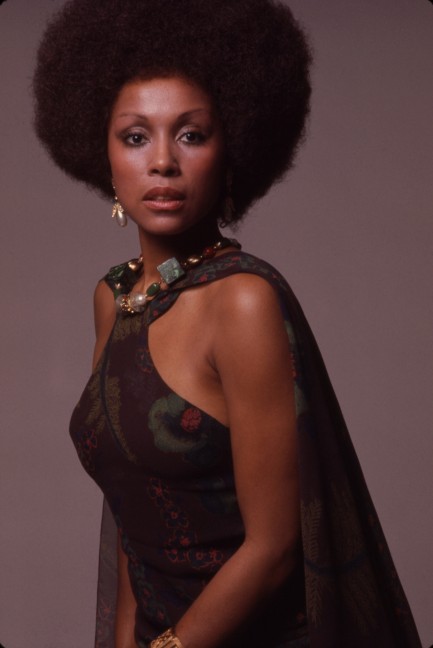 The regal, by Diahann Carroll, crown not included The regal, by Diahann Carroll, crown not included
 The bohemian, by Esther Anderson, who appeared in flims like Genghis Khan and A Warm December. The bohemian, by Esther Anderson, who appeared in flims like Genghis Khan and A Warm December.
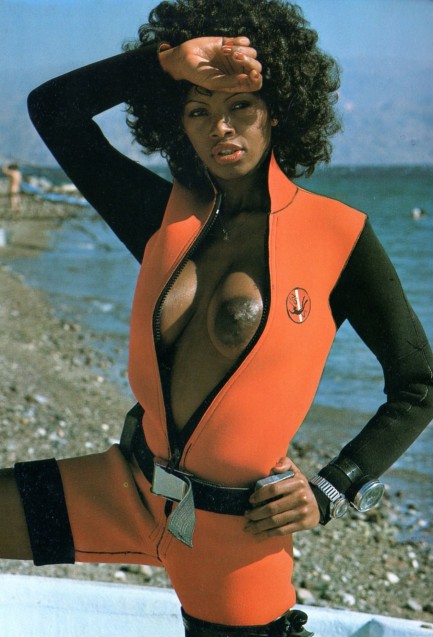 The aquatic, by Camella Donner, who's a true water sprit, as we've shown you before. The aquatic, by Camella Donner, who's a true water sprit, as we've shown you before.
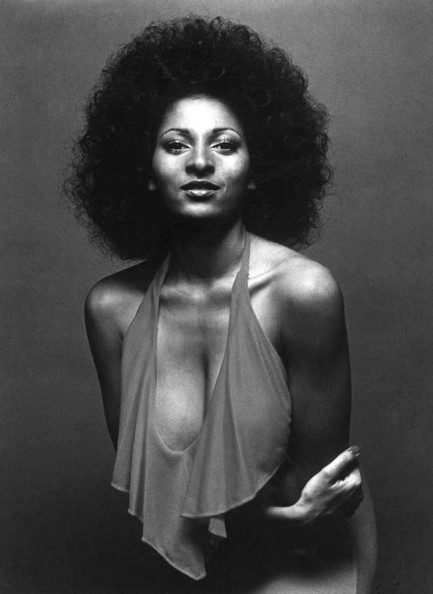 The iconic, by Pam Grier, who did as much to popularize the afro as any film star in history. The iconic, by Pam Grier, who did as much to popularize the afro as any film star in history.
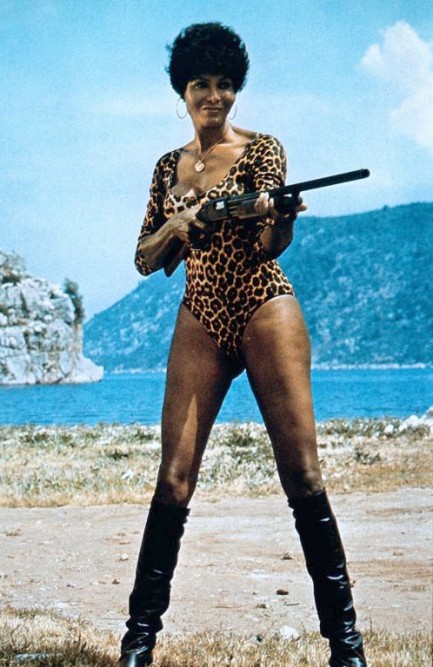 The tall and proud afro, worn by trans b-movie actress Ajita Wilson. The tall and proud afro, worn by trans b-movie actress Ajita Wilson.
 The wild child, seen here atop Italian actress Iris Peynado. The wild child, seen here atop Italian actress Iris Peynado.
 The supreme afro, seen here on Diana Ross. The supreme afro, seen here on Diana Ross.
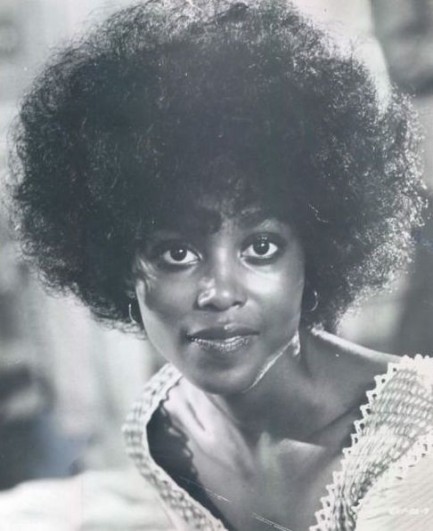 The lovely innocence afro, by Brenda Sykes. The lovely innocence afro, by Brenda Sykes.
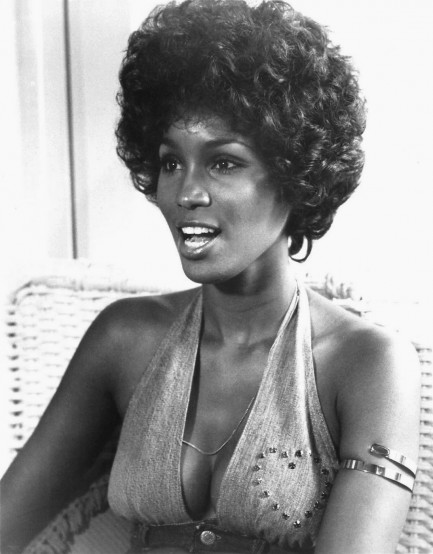 The you-could-be-bald-and-still-be-smokin'-hot, demonstrated by Get Christie Love star Teresa Graves. The you-could-be-bald-and-still-be-smokin'-hot, demonstrated by Get Christie Love star Teresa Graves.
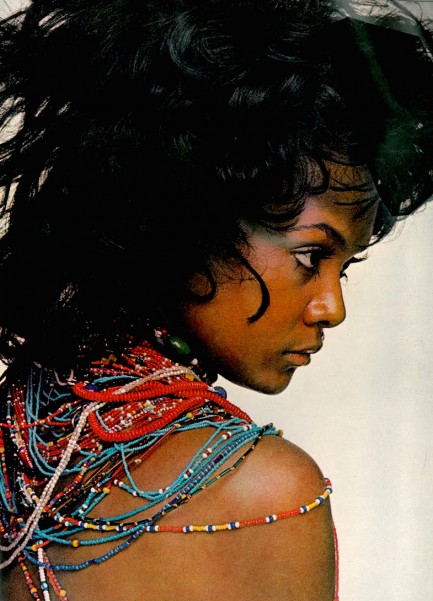 The afro-warrior by Cleopatra Jones star Tamara Dobson. Definitely more in the category of a large perm, but she pioneered the high fashion afro, so she's earned some latitude. The afro-warrior by Cleopatra Jones star Tamara Dobson. Definitely more in the category of a large perm, but she pioneered the high fashion afro, so she's earned some latitude.
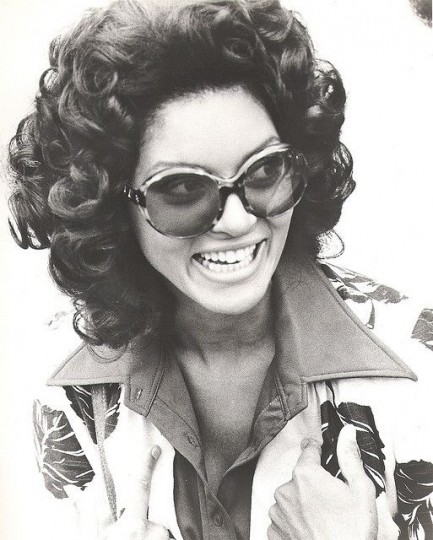 The too-cool-for-you afro/perm by Vonetta McGee. The too-cool-for-you afro/perm by Vonetta McGee.
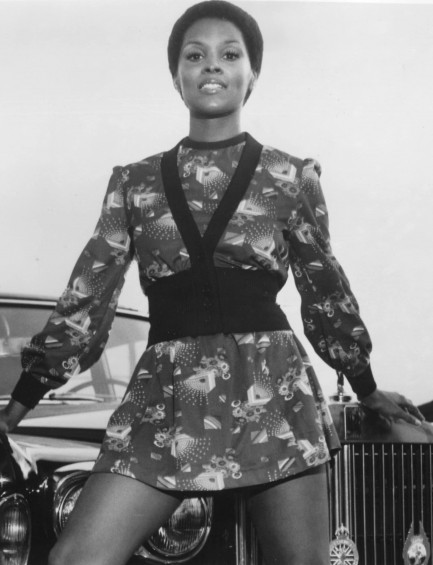 The action afro, seen here on Jeannie Bell. This barely qualifies, but she had one of the largest afros in the history of cinema, so we can cut her some slack. Check her screen shot in this post to be amazed. The action afro, seen here on Jeannie Bell. This barely qualifies, but she had one of the largest afros in the history of cinema, so we can cut her some slack. Check her screen shot in this post to be amazed.
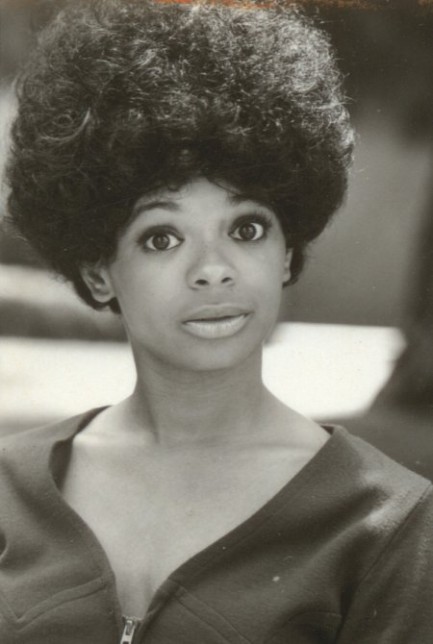 The bright-eyed and bushy, by Carol Speed. The bright-eyed and bushy, by Carol Speed.
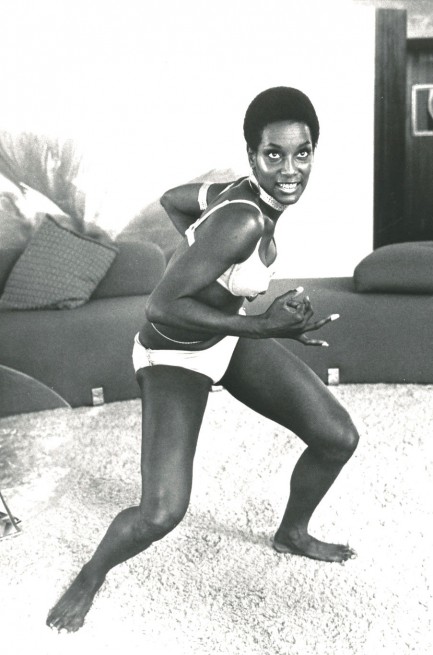 The action afro again, this time by Trina Parks, who sported this look in Diamonds Are Forever. Is it technically an afro? Tell her it isn't and see what happens. The action afro again, this time by Trina Parks, who sported this look in Diamonds Are Forever. Is it technically an afro? Tell her it isn't and see what happens.
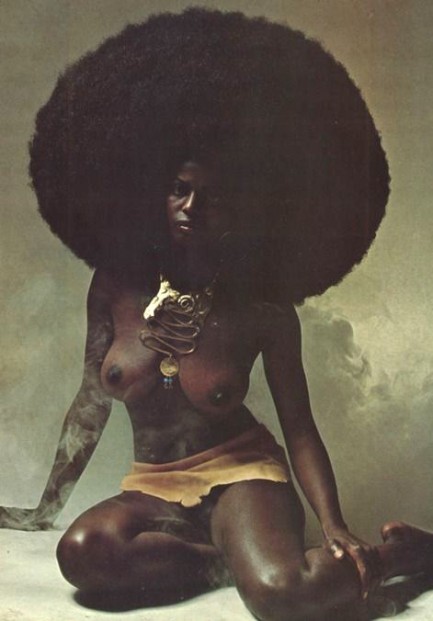 And lastly, the too-big-to-be-real afro, worn by Azizi Johari, whose actual hair you can see here. And lastly, the too-big-to-be-real afro, worn by Azizi Johari, whose actual hair you can see here. There are numerous other afro shots in our website, but we can't possibly remember where they all are, so you'll just have to find them yourself, maybe by clicking the blaxploitation link below. Besides those, we do recall one more afro you can check out. It's on Desirée West, and you'll need to gird yourself for probably the hottest shot in Pulp Intl. history. Ready? Look here.
 Sondra Currie commits police banality. 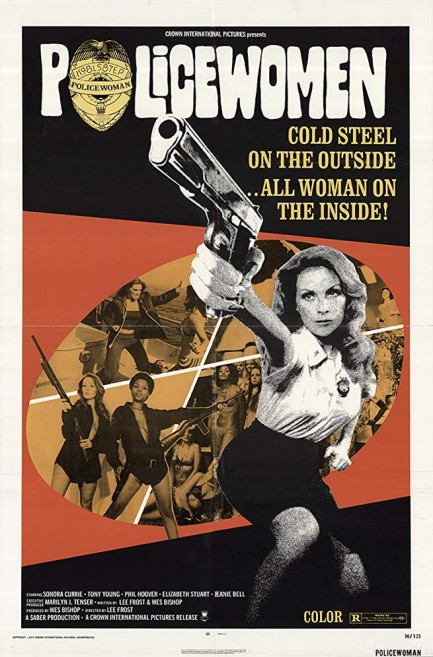
The badass on the above promo poster is the prolific and still-working U.S. actress Sondra Currie, whose credits include everything from 1970's Rio Lobo to 2009's The Hangover. Policewomen is actually about just one policewoman with the fun character name Lacy Bond. The action starts with a mass escape at L.A.'s women's jail, which Lacy almost foils singlehandedly using her superior martial arts skills. But two convicts get away, one of whom is Jeannie Bell—the reason we watched this flick in the first place.
After the jailbreak intro come the opening credits, and the first image you see is this:
Which is a pretty nice visual. But lest you think this is a movie dealing solely with serious police work, the next images you see are these:
Then these:
And finally these:
So viewers know going in this is full spectrum ’70s schlock. Lacy is tapped for a dangerous undercover assignment taking down a gang of female drug smugglers. It shouldn't be too difficult. The gang mainly lounges around an L.A. suburb in bikinis and hot pants. Their leader is a septuagenarian career criminal looking for one more big score before cruising into her sunset years. The cops have other ideas, and Lacy infiltrates the group in unlikely fashion in order to take them down from within.
Policewomen actually has a couple of twists we considered to be surprising for a low budget movie, but budget is the crux of it—higher production values might have yielded a passable effort, but there weren't, and it isn't. And sad to say, the movie mostly fails to cross the line into entertainingly bad—except for a rather amusing falling dummy shot—and instead remains a joyless slog for its entire length. Since the field of ’70s girl gang movies is so crowded, there's no way we can recommend this botched entry. But before we sign off, here's a screenshot of Jeannie Bell, whose afro reaches truly epic proportions: 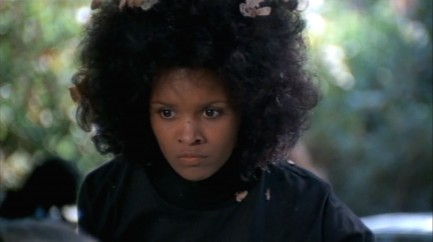 Even with a top heavy hairdo and dead leaves stuck in her curls, Bell looks smashing. She can't act. She and everyone else in the movie seem as if they're searching for their lines on an optometrist's eye chart, but even so, there's nothing we've seen of Bell that does anything but encourage us to see even more. Check out a promo image of this eternal goddess here. Policewomen premiered today in 1974.
Is it weird that with all these women around the only thing that truly turns me on is pumping iron? If only weight training could fix—*sob*—this hideous mug of mine.
Central I'm issuing a POLO alert for the Los Angeles metro area. Repeat—be on the look-out for a missing Polo shirt. Or any shirt from Ralph Lauren.
 Teach, nurture, encourage, love. That all comes later. Right now, they're mainly focused on killing. 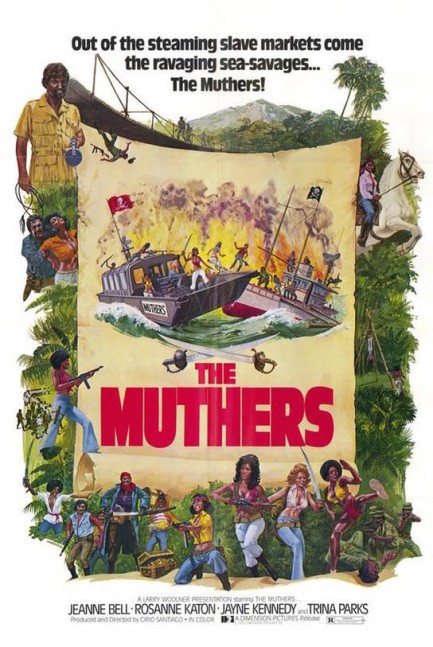
Yes, there are two movies called The Muthers. We covered the one from 1968 yesterday. Today we turn our attention to the unrelated blaxploitation flick, which premiered this month in 1976. Yesterday's Muthers was a simple nudie romp, rather innocent. Here eight years later we have a full blown savage adventure epic about a clan of female pirates who get themselves deliberately thrown in a coffee plantation/prison camp called Sal Si Puedes—Get Out If You Can—as part of a rescue mission. So what you basically have here is a women-in-prison movie, replete with sweat, cruelty, and a desperate plan to make a break for freedom.
Two of the pirates are portrayed by Playboy centerfolds Jeannie Bell and Rosanne Katon, while model Jayne Kennedy is a sort of privileged prisoner. Without getting too pervy about it, these are three of the more beautiful women from ’70s b-cinema. Another pirate is played by Trina Parks, who while she isn't otherworldly like the goddesses previously mentioned, is certainly plenty hot by any normal measure. We bring up their physical characteristics because it's exactly why director/writer/producer Cirio Santiago cast them. He was an exploitation producer/director nonpareil, and his milieu was putting beautiful women—among them Pam Grier, Judith Brown, Roberta Collins, Margaret Markov, and Colleen Camp—in roles where they drove the action.
The Muthers takes place in what is supposed to be Central America, but it was really produced in the good old Philippines by Santiago and the same people who gave the world movies like She Devils in Chains and Savage! The women Santiago has assembled here karate kick, rabbit punch, and machine gun a series of anonymous bad guys, finally working their way up the prison camp's commandant, played by Tony Carreon. Who comes out on top? You never know in these jungle epics, but you can count on the end being pyrotechnic. Do we recommend this? Well... in terms of sheer quality maybe not, but in terms of watching Bell, Katon, and Kennedy? For sure. Those girls are poison!
 This woman is simply dynamite. 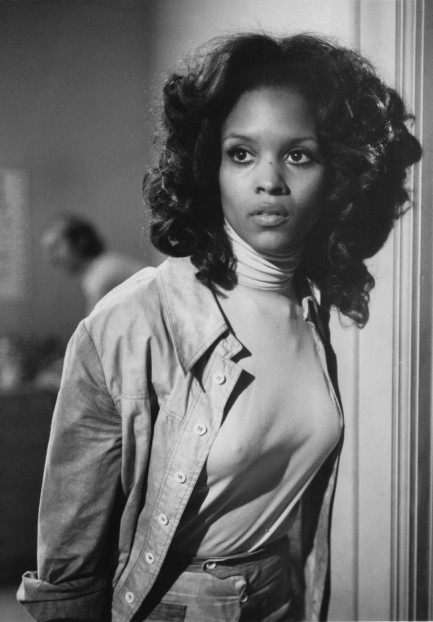
U.S. actress Annie Lee Morgan used a couple of pseudonyms in her career. When she broke into celebrityhood as a nude model for Playboy she was Jean Bell, and later as an actress she was often Jeannie Bell. By whatever name she was one of the most beautiful performers of the 1970s, which makes it a shame b-movies and television shows were the extent of her career. Her best known role? Probably the blaxploitation actioner TNT Jackson—which you can read about here. The above shot is undated but probably from around 1973.
 Jeanne Bell karate chops her way across Hong Kong. 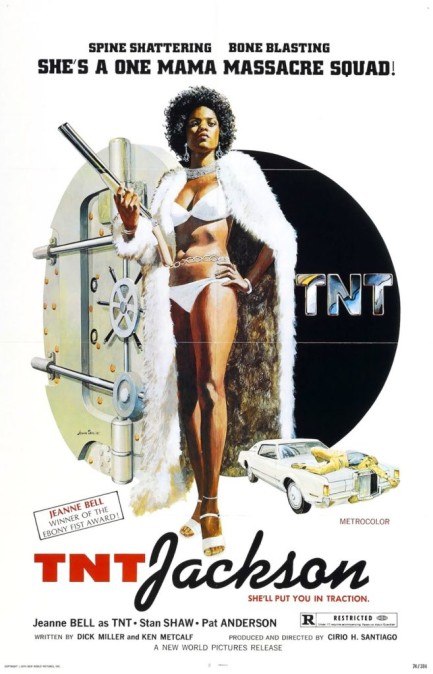
TNT Jackson, for which you see the U.S. promo poster painted by John Solie above, is a mid-budget blaxploitation flick shot in the Philippines and Hong Kong, built around clumsy martial arts, a flimsy plot, and shoddy acting. But it has Jeanne Bell. Playboy magazine had made Bell a centerfold in 1969. From there she launched a movie career, with TNT Jackson coming ninth in her filmography. She plays Diana “TNT” Jackson, who learns that her brother was killed by Hong Kong drug dealers and seeks payback. While the plot is nothing special, Bell certainly is. She was twenty-five and wore a bouffant hair-do when she first appeared in Playboy; in TNT she was thirty and had blossomed into an unforgettable beauty with a frosted afro, kicking and chopping her way across the movie screen. All the fight scenes are hilarious, with their cut-rate choreography and claw-handed posing, but they're fun to watch, especially the one in which she kicks the shit out of a bunch of guys while wearing only panties. That bit seems to us a clear homage to Reiko Ike's totally nude fight in 1973's Sex & Fury, another movie that surpasses its limitations by piling on style and attitude. Is TNT Jackson actually good? No—but we bet it'll make you smile. It premiered in the U.S. today in 1974.
 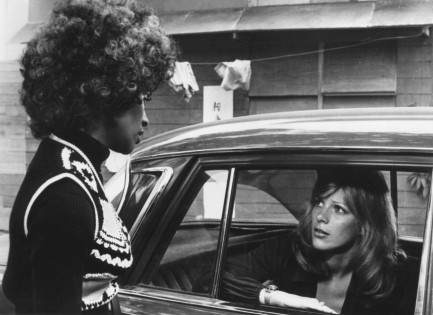 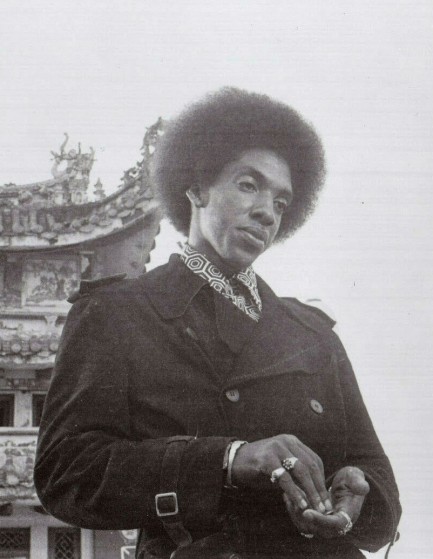  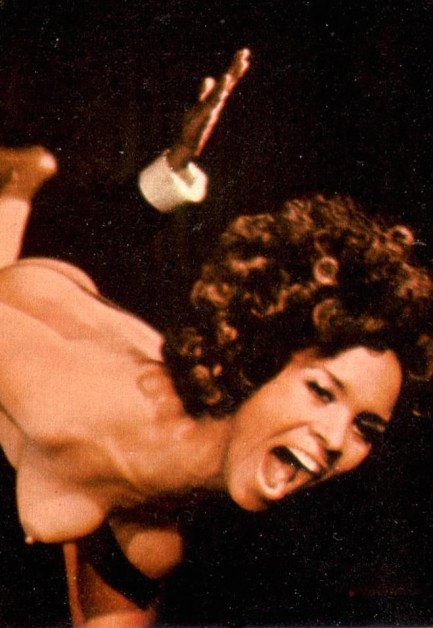 
|
 |

The headlines that mattered yesteryear.
2003—Hope Dies
Film legend Bob Hope dies of pneumonia two months after celebrating his 100th birthday. 1945—Churchill Given the Sack
In spite of admiring Winston Churchill as a great wartime leader, Britons elect
Clement Attlee the nation's new prime minister in a sweeping victory for the Labour Party over the Conservatives. 1952—Evita Peron Dies
Eva Duarte de Peron, aka Evita, wife of the president of the Argentine Republic, dies from cancer at age 33. Evita had brought the working classes into a position of political power never witnessed before, but was hated by the nation's powerful military class. She is lain to rest in Milan, Italy in a secret grave under a nun's name, but is eventually returned to Argentina for reburial beside her husband in 1974. 1943—Mussolini Calls It Quits
Italian dictator Benito Mussolini steps down as head of the armed forces and the government. It soon becomes clear that Il Duce did not relinquish power voluntarily, but was forced to resign after former Fascist colleagues turned against him. He is later installed by Germany as leader of the Italian Social Republic in the north of the country, but is killed by partisans in 1945.
|

|
|

It's easy. We have an uploader that makes it a snap. Use it to submit your art, text, header, and subhead. Your post can be funny, serious, or anything in between, as long as it's vintage pulp. You'll get a byline and experience the fleeting pride of free authorship. We'll edit your post for typos, but the rest is up to you. Click here to give us your best shot.

|
|


 The pure joy afro, as modeled by Gloria Hendry, who appeared in such films as Live and Let Die and Savage Sisters.
The pure joy afro, as modeled by Gloria Hendry, who appeared in such films as Live and Let Die and Savage Sisters. The regal, by Diahann Carroll, crown not included
The regal, by Diahann Carroll, crown not included The bohemian, by Esther Anderson, who appeared in flims like Genghis Khan and A Warm December.
The bohemian, by Esther Anderson, who appeared in flims like Genghis Khan and A Warm December. The aquatic, by Camella Donner, who's a true water sprit, as we've shown you before.
The aquatic, by Camella Donner, who's a true water sprit, as we've shown you before. The iconic, by Pam Grier, who did as much to popularize the afro as any film star in history.
The iconic, by Pam Grier, who did as much to popularize the afro as any film star in history. The tall and proud afro, worn by trans b-movie actress Ajita Wilson.
The tall and proud afro, worn by trans b-movie actress Ajita Wilson. The wild child, seen here atop Italian actress Iris Peynado.
The wild child, seen here atop Italian actress Iris Peynado. The supreme afro, seen here on Diana Ross.
The supreme afro, seen here on Diana Ross. The lovely innocence afro, by Brenda Sykes.
The lovely innocence afro, by Brenda Sykes. The you-could-be-bald-and-still-be-smokin'-hot, demonstrated by Get Christie Love star Teresa Graves.
The you-could-be-bald-and-still-be-smokin'-hot, demonstrated by Get Christie Love star Teresa Graves. The afro-warrior by Cleopatra Jones star Tamara Dobson. Definitely more in the category of a large perm, but she pioneered the high fashion afro, so she's earned some latitude.
The afro-warrior by Cleopatra Jones star Tamara Dobson. Definitely more in the category of a large perm, but she pioneered the high fashion afro, so she's earned some latitude. The too-cool-for-you afro/perm by Vonetta McGee.
The too-cool-for-you afro/perm by Vonetta McGee. The action afro, seen here on Jeannie Bell. This barely qualifies, but she had one of the largest afros in the history of cinema, so we can cut her some slack. Check her screen shot in this post to be amazed.
The action afro, seen here on Jeannie Bell. This barely qualifies, but she had one of the largest afros in the history of cinema, so we can cut her some slack. Check her screen shot in this post to be amazed. The bright-eyed and bushy, by Carol Speed.
The bright-eyed and bushy, by Carol Speed. The action afro again, this time by Trina Parks, who sported this look in Diamonds Are Forever. Is it technically an afro? Tell her it isn't and see what happens.
The action afro again, this time by Trina Parks, who sported this look in Diamonds Are Forever. Is it technically an afro? Tell her it isn't and see what happens. And lastly, the too-big-to-be-real afro, worn by Azizi Johari, whose actual hair you can see here.
And lastly, the too-big-to-be-real afro, worn by Azizi Johari, whose actual hair you can see here.

